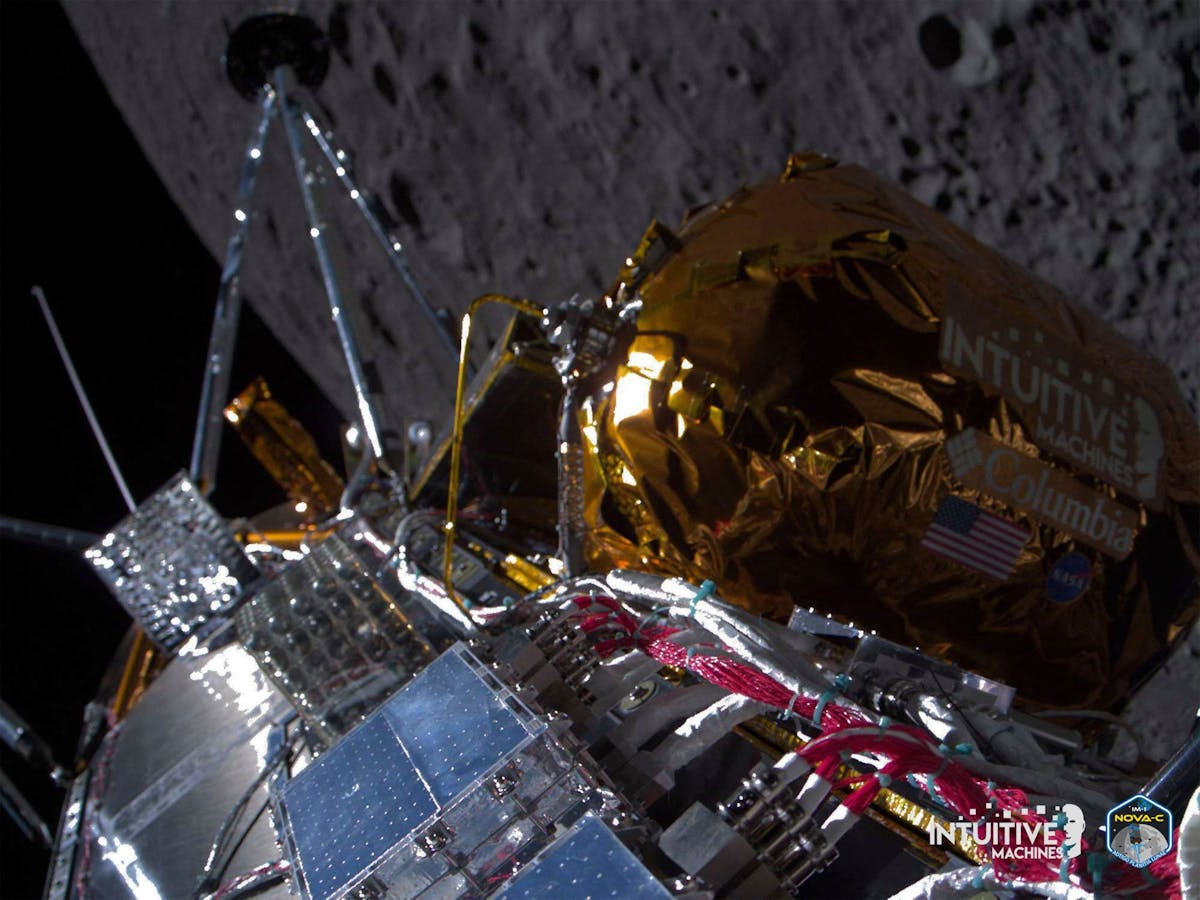Space: The US lunar probe may have landed on its side
published
spaceThe US lunar probe may have landed on its side
Intuitive Machines announced, on Thursday evening, that its “Odysseus” probe landed “straight,” but this data is incorrect.

Landing on the moon's surface constitutes a success for NASA, which contracted with Intuitive Machines to transport six scientific instruments during this mission, called IM-1.
France Press agency
The American company Intuitive Machines, the first private company to succeed in landing on the moon, announced on Friday that its probe may have been lying on one side of the moon's surface, and not vertically as announced yesterday.
Intuitive Machines' Odysseus rover touched down on the moon's surface at 12:23 a.m. Friday, at the end of a final descent full of twists and turns, after its navigation system and complex communications failed immediately after landing.
“We believe” that Odysseus “stuck his foot on the surface and the lander flipped over,” Steve Altemus, CEO and co-founder of Intuitive Machines, explained in a press conference.
Using a model of the lander, he showed the device from one side, but the top of it would likely rest on a “rock,” allowing it to be partially “lifted,” according to analyzes by the startup, founded in 2013 and headquartered in Houston, Texas.
Expected photos “this weekend”
The company said, on Thursday evening, that the plane landed “in an upright position,” but that data is incorrect, he said. He added that the lunar lander is still able to produce energy thanks to its solar panels and is therefore operational, explaining that images are expected to be taken “this weekend”, which should confirm the location of Odysseus.
This probe is the first American device to land on the moon in more than 50 years. The device in particular transports scientific instruments from NASA, which wants to explore the south pole of the moon before sending its astronauts there as part of the Artemis missions.
In addition to the photos taken by Odysseus himself, a small device equipped with cameras called EagleCam, developed by Embry-Riddle Aeronautical University, had to be removed from the lander at the last minute to capture the landing from the outside.
Unfortunately, due to complications encountered during this phase, the deployment of EagleCam has been postponed, the university said on Friday. This is now planned during the ground mission, which will allow for an external view of the lander.
Backup solution
Intuitive Machines has already received congratulations from around the world, including from rival companies that themselves recently tried the maneuver, but to no avail: Japanese startup ispace, which crashed on the moon last year, and US firm Astrobotic, which failed. Reaching the star in January.
The moon landing also represents a success for NASA, which signed a $118 million contract with Intuitive Machines to transport six scientific instruments during this mission, called IM-1.
Maybe someone saved the trip. The lander's navigation system didn't work as expected, so the company was forced to improvise. During an extra moonwalk added just before the scare landing, staff programmed NASA's laser system at the last minute to guide the lander.
This system, which aims to improve landing accuracy, was scheduled to be activated for the first time in space during this mission, during testing. But it was eventually used successfully as the primary navigation system. Odysseus must now work for about seven days, before night falls on the lunar south pole.
(France Press agency)

“Organizer. Social media geek. General communicator. Bacon scholar. Proud pop culture trailblazer.”
